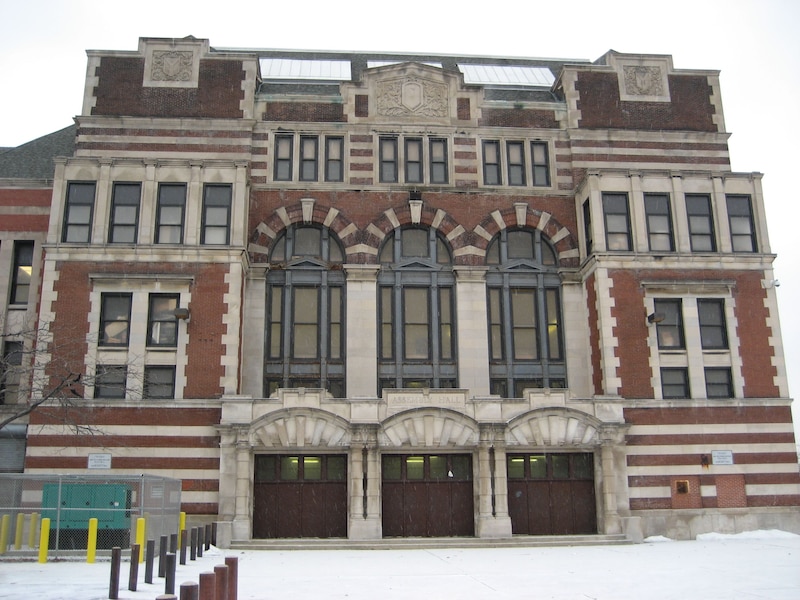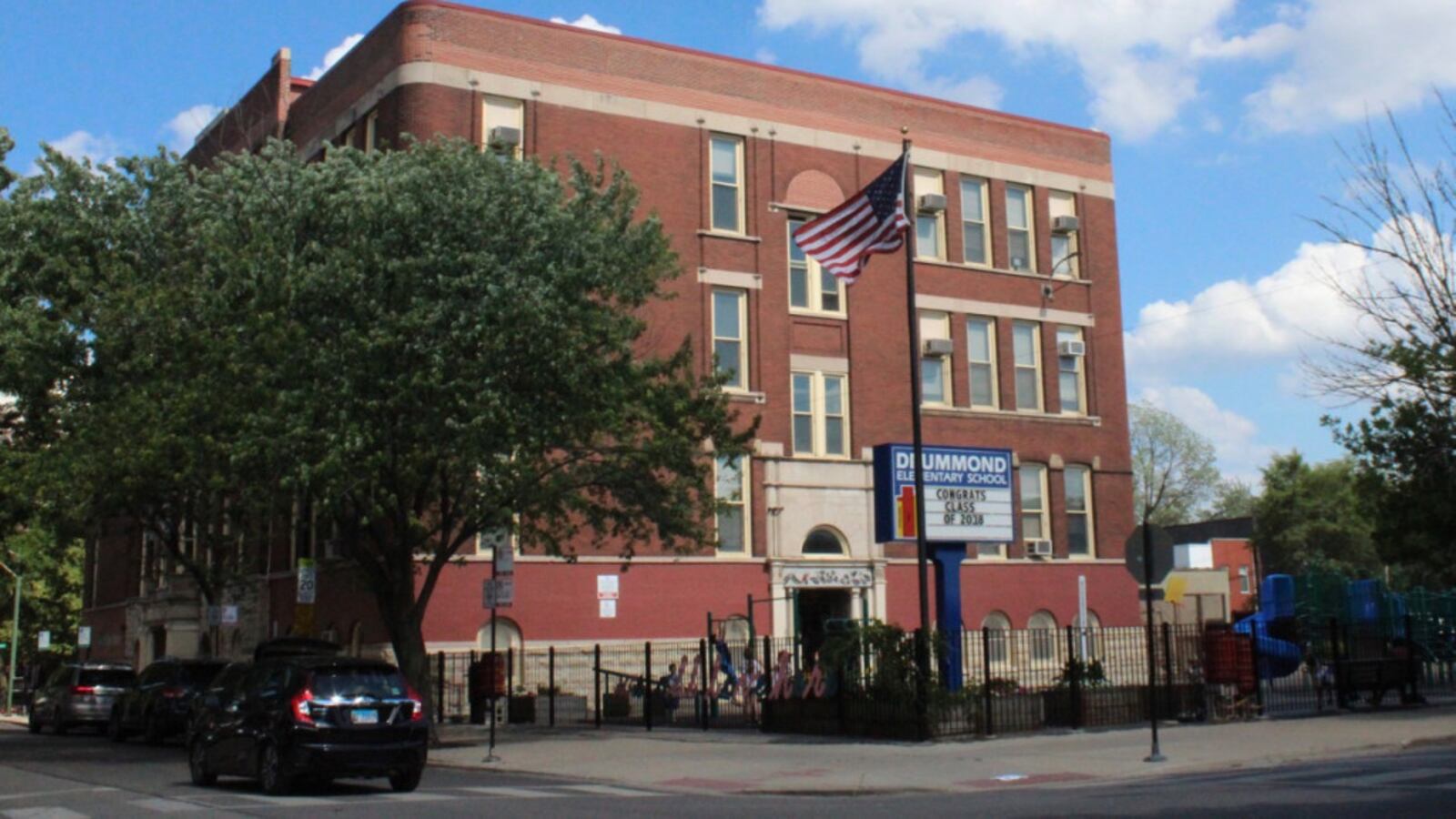When Grace was 7 years old, a rare genetic condition that renders her bones brittle caused the Drummond Montessori Elementary School student to begin using a wheelchair. But only Drummond’s first floor is wheelchair-accessible, so Grace is carried upstairs to her class, or scoots up the stairs on her bottom on days she can find the strength, according to a lawsuit filed against the Chicago school district in 2017.
The 11-year-old has resisted transferring to another school with an elevator, because the network that supported her through the trauma of her medical ordeal is at Drummond, in the Logan Square community on the Northwest Side.
“Whether pulling herself up the stairs or being carried, she has fought to stay in the community with those students and teachers,” said Grace’s lawyer Charles Petrof, who is representing her in an ongoing lawsuit to push the district to accommodate her.
Related: Chicago special education reforms slow to get off ground, monitor tells state school board
Students like Grace would get a boost from the budget Chicago has proposed for this school year. The district plans to spend $10.5 million — the most in any year since 2012 — to make schools more accessible to students with special needs.
That spending, which represents 1% of the proposed budget, is part of a longer-term plan to make schools more accessible. The district says it will make all school buildings accessible over the next five years — but only for their first floors.
Now, a disabilities rights group is pushing the city to do more to allow students such as Grace to attend classes and events on any floor of any city school building. The group, Access Living, released a report Monday grading the district’s budget proposal, which the city school board approved with a unanimous vote Wednesday afternoon.
“This is an improvement, thank you,” Grace’s mother Karen Pillsbury told the school board during the public comment period before the vote. “But my issue is we’re only making schools first-floor accessible, and I think that misses the mark.”
She said her daughter can get to the first floor, “but then what?”
“Your art is in the basement, your cafeteria is in the basement, your gym is on the third floor, and getting there is a workout in and of itself,” she said. “There’s a large portion of the school that is off limits, and it’s not off-limits to just students. It’s off limits to parents, grandparents who will never see a graduation or school assembly.”
Complying fully with the Americans with Disabilities Act’s requirements for accessibility would cost the district, at a minimum, $300 million, according to Chris Yun, an education policy analyst with Access Living. She estimated that it would cost at least $250 million to put elevators in all of the district schools without one, and another $50 million for ramps, railings, toilets, and other interior features.
The proposed budget is “a good start,” Yun said. “But if you appropriate $10.5 million per year, how long will it take?”
Her group, Access Living, wants the district to prioritize “complete school accessibility” so that students with mobility issues aren’t limited in their choice of schools and can enjoy the same programs as their peers. (The group’s report also calls on the city to allocate funding to fix problems that landed the city’s special education program under state oversight.)
Related: How will Chicago repair the harm from special-education neglect?
“As the district focuses on racial equity, it is important to recognize that CPS can’t achieve its goals without support for students with disabilities as well,” the report says.
At Wednesday school board meeting, district Chief Operating Officer Arnie Rivera gave a much bigger estimate than Yun for what it would cost to make all school buildings fully compliant with the Americans with Disabilities Act.
About $600 million.
But there are no specific plans currently, short or long-term, to spend that much to accommodate students with disabilities.
The district plans to spend at least $80 million over the next five years to make all building’s first-floor accessible, he said. Rivera noted that the district hadn’t decided which schools would get improvements, and would first consult with stakeholders, including Access Living and the Mayor’s Office for People with Disabilities.
Education officials emphasize that they are spending aggressively to make buildings accessible after a long period of disinvestment. From 2013 to 2019 — the period when former Mayor Rahm Emanuel set the city schools’ budget — the district spent only $2.6 million total on renovations to make schools more accessible to students with disabilities.
“The past few years we had not made investments in making sure our schools were accessible,” Chicago Public Schools CEO Janice Jackson told WBEZ on Tuesday. “We want to make sure we have first-floor accessibility … You will see those investments in many of our neighborhood schools.”
Chicago has more than 650 schools, many of them in old buildings that are expensive to retrofit with elevators. The district itself considers 200 schools not accessible, and another 50 are accessible only on their first floor.

“We’ve been trying to get one for years,” said Roy Baldon, a Local School Council member at Marshall Metropolitan High School, about an elevator.
At a hearing about the city’s proposed capital budget at Whitney Young High School last week, Baldon told Chalkbeat that Marshall’s lack of an elevator has limited the school’s ability to serve students with disabilities.
And not just students.
Shawn Harrington, a former Marshall basketball star and bas featured in the film “Hoop Dreams” was working as a basketball coach and special education aide at the West Side school in 2014 when he was shot in a case of mistaken identity and paralyzed from the waist down. He ultimately left the school.
“If we had that elevator,” Baldon said, “maybe he would be able to come back and do more.”
Harrington could not be reached for comment. But Rus Bradford, a friend who wrote a book about Harrington, confirmed that the lack of an elevator was an obstacle for Harrington. His job as a special education aide involved him following students from class to class to help keep them on task.
“They would go up and down stairs, and he can’t,” Bradford said. “He could get in the building with a wheelchair, but he couldn’t do his job.”


